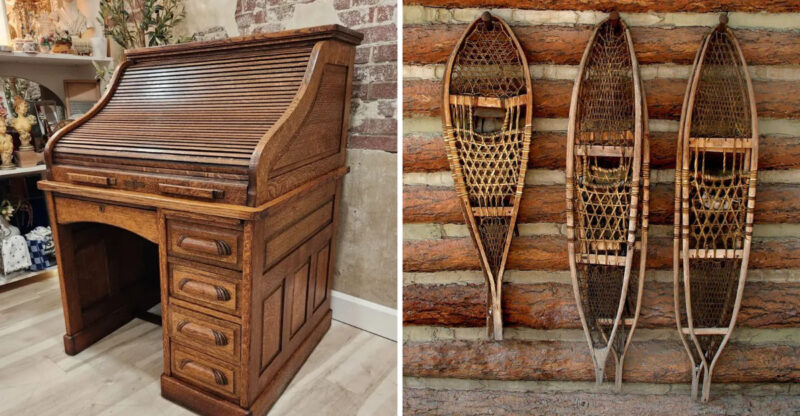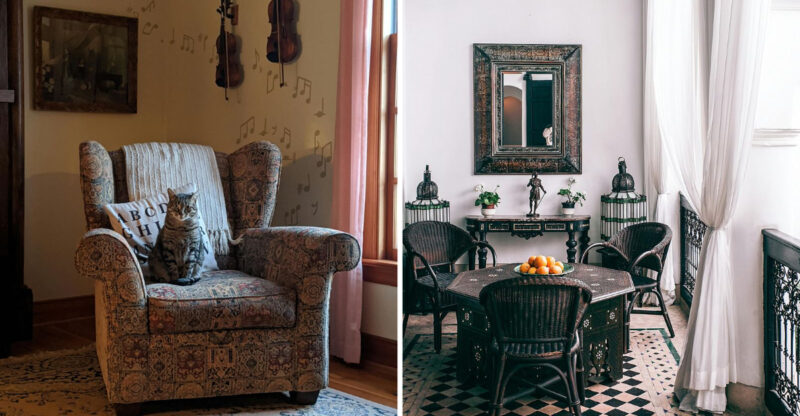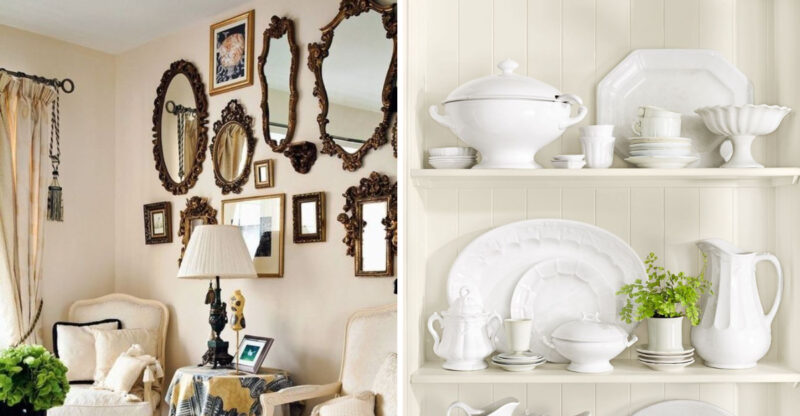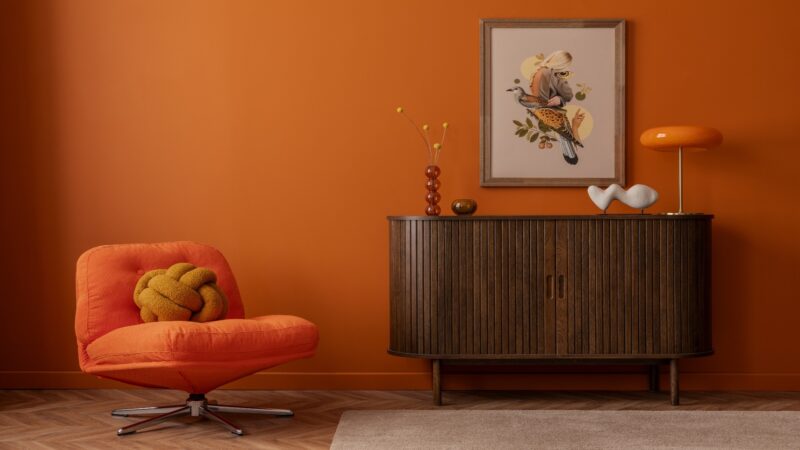12 Minnesota Furniture Treasures Dropping In Value But 5 That Might Be Your Hidden Gems

Minnesota has a rich history of furniture making, from handcrafted pieces by local artisans to factory-made treasures that once filled homes across the state.
While some of these beloved items are losing their market value in today’s collecting world, others are quietly becoming valuable finds that savvy collectors are hunting down.
Understanding which pieces are falling out of favor and which ones might be worth holding onto can help you make smarter decisions about your family heirlooms or thrift store discoveries.
1. Oak Pressed-Back Dining Chairs
Once considered the height of dining room elegance, these chairs filled Minnesota homes throughout the early 1900s. Families gathered around tables surrounded by these sturdy seats, passing down stories and meals for generations. Their pressed designs were made to look hand-carved, offering beauty at an affordable price.
Today’s market tells a different story though. Buyers prefer lighter woods and modern styles over the heavy oak construction. Most antique dealers struggle to sell complete sets, even at bargain prices.
If you inherited a set from grandma’s house, don’t expect a windfall. They’re better kept for sentimental value than financial gain right now.
2. Waterfall-Style Bedroom Sets
Art Deco influences shaped these rounded, cascading furniture pieces that became wildly popular during the 1930s and 1940s. Minnesota furniture makers produced countless bedroom sets featuring the distinctive waterfall edge on dressers, vanities, and headboards. The veneer finish gave them a sleek, modern appearance that homeowners adored.
Unfortunately, veneer doesn’t age gracefully in Minnesota’s harsh climate. Peeling, bubbling, and discoloration plague many surviving pieces, making restoration costly and difficult.
Collectors have largely moved on to mid-century modern styles instead. Even pristine waterfall sets fetch disappointingly low prices at estate sales. Your childhood bedroom furniture probably won’t fund your retirement.
3. Colonial Revival Hutches
Massive and imposing, these hutches dominated dining rooms across Minnesota from the 1920s through the 1960s. Families displayed their finest china and glassware behind the glass doors, treating them as prized showpieces. The dark finishes and formal styling matched the decorating trends of those decades perfectly.
Modern homes rarely accommodate such large, heavy pieces anymore. Open floor plans and smaller dining spaces have made these hutches impractical for most buyers.
Downsizing seniors flood the market with colonial revival hutches, but few people want them. Dealers often refuse to take them, even for free, because storage costs exceed potential profits.
4. Golden Oak Roll-Top Desks
Minnesota offices and homes once treasured these impressive desks with their ingenious tambour doors and countless cubbyholes. Business owners conducted their affairs from these commanding pieces, while families used them for household management and correspondence. The golden oak finish glowed warmly under lamplight, creating an atmosphere of prosperity and order.
Computer workstations have made these desks obsolete for most practical purposes. Their small writing surfaces can’t accommodate modern technology, and the compartments are too narrow for today’s office supplies.
Weight presents another problem when moving or selling them. Many weigh several hundred pounds, requiring professional movers and limiting potential buyers significantly.
5. Mediterranean-Style Bedroom Furniture
Did you know this style dominated American furniture showrooms during the 1970s? Minnesota retailers couldn’t keep these pieces in stock as homeowners embraced the heavy, ornate aesthetic inspired by Spanish and Italian designs. The dark finishes, elaborate hardware, and chunky proportions defined an entire era of decorating.
Fashion has not been kind to Mediterranean furniture. What seemed sophisticated then now appears dated and gloomy to most buyers.
Young homeowners especially avoid this style, preferring Scandinavian minimalism or farmhouse chic instead. Thrift stores overflow with Mediterranean pieces that nobody wants, making them nearly worthless in today’s resale market despite their solid construction.
6. Upholstered Wingback Chairs
Minnesota living rooms featured these formal chairs for decades, positioned near fireplaces or in conversation areas. The high backs and side wings provided comfort and draft protection in older homes with poor insulation. Families reupholstered them multiple times, updating fabrics to match changing décor while preserving the classic frame underneath.
Reupholstery costs now exceed the value of most vintage wingback chairs. Unless the frame is exceptionally well-made or the piece has documented provenance, investing in new fabric doesn’t make financial sense.
Younger buyers also find the formal style too stuffy for their tastes. They gravitate toward casual seating options that better suit relaxed, modern lifestyles.
7. Harvest Gold Laminate Kitchen Tables
Avocado and harvest gold ruled kitchen color schemes throughout the 1970s, and Minnesota homes embraced this trend enthusiastically. These laminate tables promised easy cleanup and durability for busy families raising kids during that era. The chrome legs and matching chairs completed the look that seemed so fresh and modern at the time.
Nostalgia hasn’t rescued these pieces from obscurity. While some retro items gain value over time, harvest gold furniture remains firmly out of favor with collectors and decorators alike.
The dated colors clash with contemporary kitchens, and the laminate surfaces often show decades of wear. Most end up in garages or donation centers rather than resale shops.
8. Maple Colonial Hutch Tables
These dual-purpose pieces served Minnesota families well in smaller homes where space was precious. The bench provided seating and storage, while the top lifted to create a dining surface for casual meals. Maple construction ensured durability, and the colonial styling appealed to those who loved Early American décor.
Functionality doesn’t always equal desirability in furniture markets. Hutch tables occupy awkward space and serve neither function particularly well by modern standards.
The colonial aesthetic has fallen dramatically out of fashion too. When these tables appear at estate sales, they typically sell for a fraction of their original cost, if they sell at all.
9. Brass and Glass Étagères
Shiny brass and gleaming glass defined sophisticated decorating during the 1980s across Minnesota. These tiered shelving units displayed collections, plants, and decorative objects in living rooms and dining areas. The open design created visual interest without blocking light or views, making rooms feel spacious and airy.
Brass finishes have cycled out of favor, replaced by brushed nickel, matte black, and other contemporary metals. The maintenance required to keep brass polished also discourages modern buyers who want low-maintenance furnishings.
Glass shelves pose safety concerns in homes with children or pets. Combined with the dated styling, these factors have tanked resale values considerably from their 1980s heyday.
10. Pine Entertainment Centers
Bulky entertainment centers solved the problem of housing massive tube televisions and extensive media collections during the 1990s. Minnesota furniture stores sold thousands of these pieces in pine, oak, and cherry finishes. Families organized their VHS tapes, DVDs, and stereo equipment in the multiple compartments and shelves.
Flat-screen televisions eliminated the need for these enormous cabinets. Wall mounting became the preferred display method, making entertainment centers obsolete almost overnight.
Their size works against them in today’s housing market too. Smaller homes and apartments simply can’t accommodate furniture designed for a different technological era. Most people can’t even give these away anymore.
11. French Provincial Dressers
Curves, cabriole legs, and delicate hardware characterized these romantic bedroom pieces that Minnesota homeowners adored from the 1950s through the 1980s. The light finishes and feminine details created dreamy bedroom environments, especially for young girls and teenagers. Quality varied widely, from solid wood construction to particleboard cores with thin veneers.
Shabby chic trends briefly revived interest in French Provincial furniture, but that wave has largely passed. Current preferences lean toward cleaner lines and less ornamentation in bedroom furniture.
Unless you own a high-end example from a prestigious maker, your French Provincial dresser won’t command impressive prices. The market remains flooded with average-quality pieces that struggle to find buyers.
12. Formica Drop-Leaf Kitchen Tables
Practical and space-saving, these tables served countless Minnesota kitchens during the mid-20th century. The Formica tops resisted stains and scratches while the drop leaves allowed families to expand seating when needed. Chrome or metal legs completed the utilitarian aesthetic that prioritized function over fancy styling.
Retro kitchen items haven’t all appreciated equally. While some mid-century pieces became collectible, basic Formica tables remain plentiful and undervalued.
The simple designs lack the distinctive character that drives collector interest. Reproduction versions are also readily available and affordable, eliminating any scarcity premium. Your grandmother’s kitchen table probably has more sentimental than monetary worth at this point.
13. Handcrafted Mission-Style Furniture by Local Artisans
Here’s where values start climbing instead of falling. Minnesota craftspeople created stunning Mission-style pieces featuring exposed joinery, solid quarter-sawn oak, and honest construction methods. Unlike mass-produced furniture, these handmade treasures showcase superior materials and time-honored techniques that ensure longevity.
Collectors increasingly appreciate authentic craftsmanship over factory furniture. Signed pieces by known Minnesota artisans command premium prices at specialty auctions and antique shows.
If you own Mission furniture with a maker’s mark or documentation of local origin, have it professionally appraised. What might look like ordinary oak furniture could actually represent significant investment-grade work. Quality craftsmanship never truly goes out of style.
14. Mid-Century Modern Pieces by Minnesota Designers
When Minnesota designers embraced modernism during the 1950s and 1960s, they created furniture that remains highly sought after today. Clean lines, innovative materials, and functional beauty defined their work. Names like Tomlinson of High Point and other regional manufacturers produced pieces that reflected Scandinavian influences while maintaining American sensibilities.
Demand for authentic mid-century modern furniture continues growing among younger buyers and serious collectors. Original pieces in good condition appreciate steadily year after year.
Check any sleek, minimalist furniture from this era for maker’s marks or labels. What seemed ordinary when grandpa bought it might now be worth substantial money to the right buyer.
15. Antique Swedish Immigrant Furniture
Minnesota’s Scandinavian heritage lives on in remarkable furniture brought by immigrants or crafted in traditional styles. These pieces often feature painted decorations, distinctive joinery, and designs passed down through generations. Trunks, cupboards, and chairs carried across the ocean represent both functional objects and cultural treasures.
Museums and collectors actively seek authentic immigrant furniture with documented Minnesota provenance. The combination of historical significance and artistic merit drives values upward consistently.
If your family preserved Swedish furniture from immigrant ancestors, research its history carefully. Original painted surfaces especially increase value dramatically. These pieces connect modern Minnesotans to their roots in ways that resonate deeply with buyers.
16. Arts and Crafts Movement Pieces with Minnesota Origins
Though the Arts and Crafts movement centered in other regions, Minnesota craftspeople embraced its philosophy of honest materials and skilled handwork. Local workshops produced furniture emphasizing natural wood grain, visible construction, and thoughtful proportions. Copper hardware, leather upholstery, and mortise-and-tenon joinery characterized their best work.
Arts and Crafts furniture represents one of the most stable investment categories in the antiques market. Properly attributed Minnesota pieces command prices that continue rising as collectors compete for quality examples.
Look for maker’s marks, original finish, and solid construction. Even pieces needing minor restoration can be worth significant money when craftsmanship and provenance are exceptional.
17. Rare Northern Minnesota Lodge Furniture
Rustic furniture crafted for Minnesota’s north woods resorts and lodges tells stories of the state’s tourism heritage. Birch bark accents, twig construction, and designs incorporating natural forms created distinctive pieces perfectly suited to wilderness settings. Some makers achieved regional fame for their lodge furniture during the early-to-mid 20th century.
Cabin culture remains strong in Minnesota, and authentic vintage lodge furniture has become increasingly collectible. Buyers seeking to furnish lake homes want genuine period pieces rather than modern reproductions.
If you inherited furniture from a family cabin or old resort, investigate its origins. Well-preserved examples from known makers can surprise owners with their current market values.






